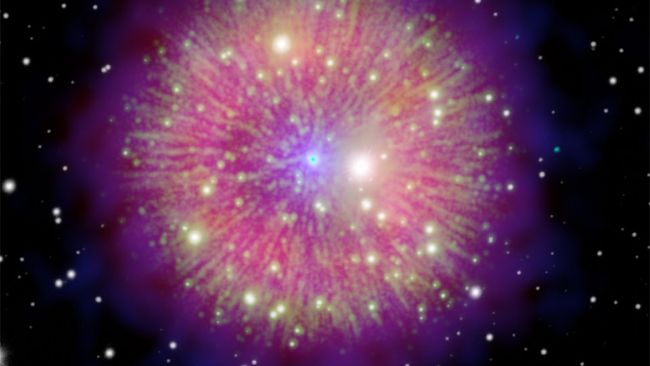An Insight into the 800-Year-Old Supernova and the Discovery of a ‘Zombie’ Star
Introduction
A supernova is a powerful and luminous stellar explosion that occurs at the end of a star’s life cycle. One such extraordinary celestial event unfolded in the year 1181, illuminating the night sky like a giant firework for a staggering 185 consecutive days. The remains of this historic supernova have been traced to the Cassiopeia constellation and have been imaged, depicting a fascinating firework-like formation.
NASA’s Chandra X-ray Observatory
To study the remnants of this supernova, scientists utilized the advanced imaging capabilities of NASA’s Chandra X-ray Observatory. This technology released a composite image of the supernova remnant (SNR) 1181, integrating data acquired from various Earth- and space-based observatories. This included ESA’s XMM-Newton, NASA’s Wide-field Infrared Space Explorer, the MDM Observatory in Arizona and Pan-STARRS in Hawaii.
The Supernova Remnant
The composite image brings to light a nebula (a celestial cloud of gas and dust) spanning approximately 16 light-years, with a bright star at its center. The intense colors in the image represent different types of light — X-rays are depicted in blue and cyan, infrared light in pink and red, and optical light in white and green.
Origin of the White Dwarf Star
At the heart of the nebula is a white dwarf star, believed to have been formed during the 1181 supernova. Scientists theorize that this star was birthed when two white dwarf stars merged, leading to a powerful thermonuclear explosion known as a sub-luminous Type Iax event. However, this explosion was not entirely consummated, leaving behind an incredibly hot star.
The ‘Zombie’ Star
Typically, a merger of two stars results in a full supernova explosion, leaving no remnants. The incomplete explosion in this case led to the creation of a “zombie” star, along with the surrounding nebula. This star, one of the hottest in the Milky Way, boasts a temperature of approximately 200,000 degrees Celsius. It is also notable for the stellar wind it emits, reaching speeds of up to 16,000 km/s.
The Age of the Supernova Remnant
While we refer to this as an 800-year-old supernova remnant, it is important to note that this refers to the time when it was first observed from Earth. Given that the supernova is approximately 10,100 light-years away, the actual event transpired around 10,900 years ago — the light from the explosion only reaching us 800 years ago.
Significance of the Discovery
This discovery is significant as it allows us a glimpse into an event observed by our ancestors centuries ago. It also provides valuable insights into the life cycle of stars, the nature of supernovae, and the conditions that lead to the formation of “zombie” stars.
Conclusion
The study of supernovae and their remnants is a fascinating field, shedding light on the complex and often violent processes that shape our universe. The discovery of the 800-year-old supernova remnant and the ‘zombie’ star offer a glimpse into these processes and serve as a testament to the incredible advancements in space exploration and technology.
References
The Chandra X-ray spacecraft may soon go dark, threatening a great deal of astronomy
Aftermath of 2 star explosions captured in breathtaking new NASA image
Astronomers catch rare glimpse of oldest known supernova, which dates back to Year 185
These supernovas are whipping up a storm, contributing to cosmic life and death
Do not forget to share your opinion with us to provide you with the best posts !




0 Comments